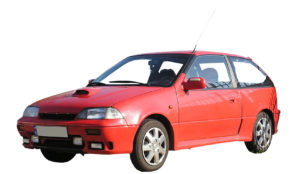Understanding Auto Liability Insurance
 Liability coverage is likely the most misunderstood part of an auto insurance policy. Yet it needs to be an area that you understand thoroughly, as it is meant to cover your legal responsibility and protect your financial well-being.
Liability coverage is likely the most misunderstood part of an auto insurance policy. Yet it needs to be an area that you understand thoroughly, as it is meant to cover your legal responsibility and protect your financial well-being.
Get quotes for car insurance right here when you use your ZIP code in the FREE box now!
If you don’t understand liability insurance than you will probably be like the millions of drivers who only choose the bare minimum amount of coverage instead of full coverage. Buying the lowest amount possible is no way to protect yourself and your assets.
Legal responsibility means that you can be sued, which puts your assets and financial stability at risk. Even if you not ordered to pay damages, a lawsuit is a costly and stressful ordeal that should be avoided at all costs.
Purpose of Liability Insurance
Liability insurance coverage is meant to cover your responsibilities when you cause an accident. If you crash your vehicle into someone else’s car, then you have surely damaged their vehicle and likely caused injuries to the driver and any passengers. You are financially responsible for paying for those damages to be repaired and any medical bills that result from the injuries.
Liability rules are different depending upon the state that you live in, but it is generally broken into tort laws and no-fault laws. Again, each state will have its own rules and regulations, but at its basic level, the difference between tort and no-fault state has to do with being able to sue for damages.
 In tort states, the at-fault driver is responsible and can be sued for the full gamut: damages, injuries, pain and suffering, etc. The National Association of Insurance Commissioners maintains that liability insurance claims can include items beyond just medical and repair bills; it can include lost wages, pain and suffering and the like.
In tort states, the at-fault driver is responsible and can be sued for the full gamut: damages, injuries, pain and suffering, etc. The National Association of Insurance Commissioners maintains that liability insurance claims can include items beyond just medical and repair bills; it can include lost wages, pain and suffering and the like.
In no-fault states, drivers are essentially giving away the right to sue the at-fault driver for items such as pain and suffering. The damages are to be recouped from your insurance company, not the at-fault driver. The focus of no-fault laws is to keep frivolous or useless lawsuits out of the courts and lawsuit claims low for insurance companies.
Lower rates are supposed to follow after no-fault car insurance laws are enacted, though that doesn’t always happen.
Bodily Injury Liability
The first part of liability insurance that you should have is bodily injury liability. It covers the costs of the injuries that you caused to another driver and other passengers. Ambulance bills, emergency room bills, doctor bills, and costs for continuing rehabilitation and therapy for others are all paid through your liability insurance.
 When you buy bodily injury liability insurance, you must specify two amounts when you buy the insurance. The first amount is the limit your insurance will pay for each person who is injured in a crash that you cause. For instance, if your limit per individual is $10,000, then a person who has $15,000 worth of medical bills will not be fully covered. Your insurance will pay $10,000 and you will be responsible for the other $5,000.
When you buy bodily injury liability insurance, you must specify two amounts when you buy the insurance. The first amount is the limit your insurance will pay for each person who is injured in a crash that you cause. For instance, if your limit per individual is $10,000, then a person who has $15,000 worth of medical bills will not be fully covered. Your insurance will pay $10,000 and you will be responsible for the other $5,000.
The second amount of bodily injury liability that you must specify is the limit that your insurance will pay for the entire accident. Obviously, you want this amount to be much higher as it needs to encompass the injuries of a carload or vanload full of people.
Property Damage Liability
The other part of liability insurance is property damage liability. This part covers the damages that you cause to others’ vehicles. It also pays for damages to surrounding property, such as utility poles, signs, fences, and even buildings.
Repair bills from accidents can easily add up to thousands of dollars.
If your accident totals a vehicle, then your insurance will pay the fair market value to replace that vehicle. You have to ensure that you have enough property damage liability as well as bodily injury liability so that you can pay for any damages that you cause to others’ vehicles. It is especially important to remember that an accident can involve multiple vehicles.
 Damaging surrounding property can also be expensive. It may not seem like a utility pole or a guardrail should be terribly expensive to replace, but both utility workers and road workers are likely paid as government workers. Their time and efforts can add up to thousands of dollars for just a short amount of work.
Damaging surrounding property can also be expensive. It may not seem like a utility pole or a guardrail should be terribly expensive to replace, but both utility workers and road workers are likely paid as government workers. Their time and efforts can add up to thousands of dollars for just a short amount of work.
A Look at State Minimums
Every state but one has minimum amounts of liability insurance that must be purchased for a vehicle in order to legally drive the vehicle; the only exception is New Hampshire. The New Hampshire Insurance Department verifies that state laws do not require drivers to purchase insurance coverage, but they must at least show proof of sufficient funds to meet New Hampshire’s motor vehicle financial responsibility requirements. Drivers must have some sort of coverage in New Hampshire.
When referring to the lowest amounts of liability coverage allowed by law, the amounts are listed by the requirements as three numbers divided by slashes, such as 20/40/10. The first number is for bodily injury limits per individual. In the above example, the limit is $20,000. The second number is the bodily injury limit for the entire accident, which is $40,000 in the above example. The last number is for property damage liability and the example above stands for $10,000 worth of coverage.
Each state has its own minimum amounts of liability insurance and the amounts vary widely.
Florida has the lowest bodily injury levels of any state at 10/20/10; Ohio is not far behind with 12.5/25/7.5. The lowest property damage levels are found in California, Massachusetts, New Jersey, and Pennsylvania with just $5,000 required.
Half of all of the states in the U.S. use limits that are 25/50/25. That provides $25,000 in coverage per individual, $50,000 in coverage for the whole accident and $25,000 in coverage for property damage. Other states have amounts that are slightly higher or lower than the most common coverage of 25/52/25; for instance, Texas’ minimum requirements are 30/60/25.
Some states have amounts that are a lot higher than the most common coverage. Alaska, Maine and Wisconsin are the highest. Alaska and Maine require at least $50,000 per person, $100,000 for an entire accident and $25,000 in property damage. Wisconsin has the same bodily injury limits, but the property damage limit is at $55,000.
Free Car Insurance Comparison
Compare Quotes From Top Companies and Save
Secured with SHA-256 Encryption
Recommended Amounts
While some states do require much higher amounts than other states, they are still not near those amounts recommended by insurance industry experts. According to the Insurance Information Institute, experts recommend that every driver should carry no less than $100,000 in coverage for each person and $300,000 in coverage for the whole accident.
Once you understand how much car accidents can really cost and that you are responsible for amounts over your insurance limits, buying the highest limits you can afford sounds like a good idea. Many vehicles these days are very expensive, especially when they are new and have low mileage. Car, trucks, and SUVs can easily cost $20,000, $30,000 or even $40,000 or more. If you wreck a brand-new, fully-loaded Dodge Charger, you can expect to pay a replacement amount of around $42,000, according to fair value vehicle estimates found on Kelley Blue Book.
 Furthermore, you could also cause an accident that damages multiple vehicles and a slew of drivers and passengers. You need to have enough coverage to pay for everyone’s damages and injuries, so having high limits is really a protection for you.
Furthermore, you could also cause an accident that damages multiple vehicles and a slew of drivers and passengers. You need to have enough coverage to pay for everyone’s damages and injuries, so having high limits is really a protection for you.
Liability Car Insurance Myths
There are many inaccuracies and untruths surrounding liability car insurance. Separating fact from fiction is important so that you don’t ever short-change your car insurance coverage.
Some people believe that liability coverage will pay for the damages to their own car. This is untrue as liability insurance only pays for damages and injuries to others. If you want full coverage for your vehicle, you will have to purchase collision and comprehensive coverage.
Some believe that a state’s minimum levels of insurance are all that is required in that state for coverage.
State minimums are not recommendations; they are the bare minimum you need to legally drive your vehicle. They likely will not cover your legal responsibility from even a moderate accident. Having insurance will help if you are sued, as your insurer will usually pay to defend you in court.
 One last myth that is very prevalent is that insurance companies basically charge the same rate for coverage. Nothing could be further from the truth! Just like gas stations and car dealerships all have different prices for what they sell, car insurance companies also offer rates that are vastly different.
One last myth that is very prevalent is that insurance companies basically charge the same rate for coverage. Nothing could be further from the truth! Just like gas stations and car dealerships all have different prices for what they sell, car insurance companies also offer rates that are vastly different.
In order to find the company that has the lowest rate for you, you should always comparison shop by getting quotes before you buy. The more quotes you get, the better chances you have of finding a truly great rate for your car insurance coverage.
Make sure to get quotes for the same amounts of coverage, especially your liability limits that are above state minimums so that you can compare your quotes equally.
Start your car insurance search on this page once you put your ZIP code in the FREE search tool!
